
The
Texas Civil War Museum located in a suburb west of Fort Worth maintains the most comprehensive collection of civil war artifacts west of the Mississippi River. While TCWM is best known for its military collections, it also holds significant collections of domestic objects and decorative flags, personal furniture and artifacts, and postwar Victorian attire. Object collections total approximately 4,000 items.
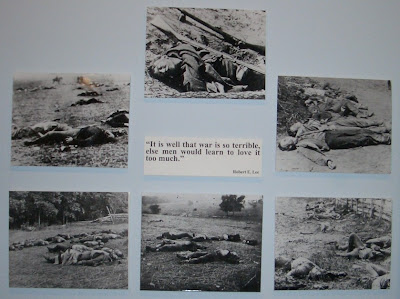
"It is well that war is so terrible, else men would learn to love it too much." - GEN Robert E. Lee
Although a majority of Texas citizens and politicians supported secession, a significant minority of about 25% favored remaining in the Union. Governor Sam Houston was probably the best known "Unionist" in Texas. Although he strongly believed in the doctrine of states rights, he thought secession was a "rash action," and certain to lead to a conflict sure to favor – in the long run – the industrial and populated North. He predicted: "Let me tell you what is coming. After the sacrifice of countless millions of treasure and hundreds of thousands of lives you may win Southern independence, but I doubt it. The North is determined to preserve this Union. They are not a fiery impulsive people as we are...but once they begin to move in a given direction, they move with the steady momentum of a mighty avalanche, and what I fear is that they will overwhelm the South with ignoble defeat." Houston refused to take an oath of allegiance to the Confederacy, and was deposed from office.


Approximately 90,000 Texans served in the Confederate Army and about 2,000 in the Union Army. Texas provided 23 Infantry Units, 43 Cavalry Units and 19 Artillery Units, as well as specialized units including a Battalion of Sharpshooters and Mounted Mountain Guards. Among the most famous units were Terry's Texas Rangers (a group of frontier cavalrymen, many of whom later became peacekeepers in the Old West), Walker's Greyhounds and Hood's Texas Brigade. Texans were involved in every major battle of the war in every state. Known as the "shock troops" of the Army of Northern Virginia, Hood's Texas Brigade were "always favorites" of General Lee and, on more than one occasion praised their fighting qualities, remarking that none had brought greater honor to their native state than "my Texans." Hood's men suffered severe casualties in a number of fights, most notably at the Battle of Antietam and at Little Round Top in the Battle of Gettysburg. Texas supplied large numbers of men, cattle and horses for the Confederate forces until mid-1863, when the Union captured of the Mississippi River.

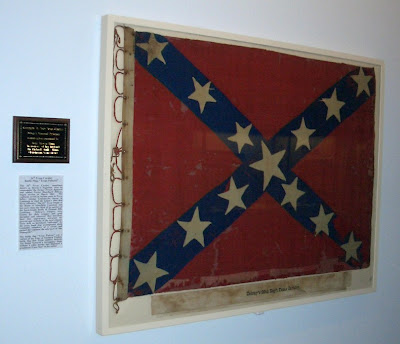



Although Texas did not experience many significant battles, the Union mounted several attempts to capture towns and ports in the south and gulf coast regions of Texas. With ports to the east under blockade or captured, Texas and western Louisiana ports were a critical link to the outside world for the Confederacy. A few cities fell to Union troops temporarily during the war, including Port Lavaca, Indianola and Brownsville. Federal attempts to seize control of Laredo, Corpus Christi and Sabine Pass failed. By the end of the war no territory was in Union hands. The last battle of the civil war was fought at Palmito Ranch May 13, 1865 on the Rio Grande River in south Texas. The Confederates won, only to have to surrender to the Union after realizing the war had ended a month earlier with the surrender at Appomattox Courthouse in Virginia.


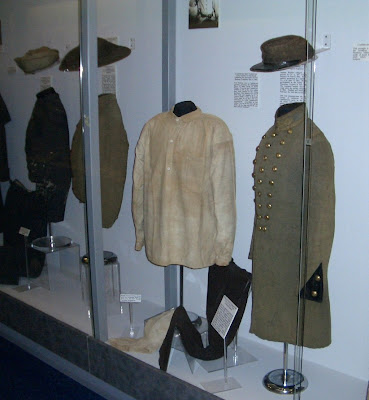
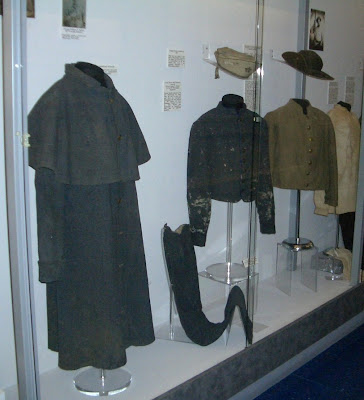

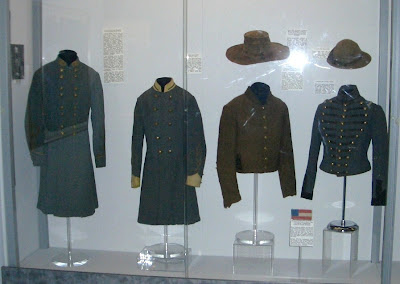


The pictures above are not representative of the uniforms worn by the average Confederate soldier, especially early in the war. Early in the war, Confederate soldiers received their uniforms - if and when they had uniforms - from a variety of sources. There were many differences, depending on unit, location, time, and other variables. Some companies had uniforms made up by the ladies at home, some units were issued militia uniforms by their states, and some commands had uniforms made up by local tailors. Lots of Confederates went to war in plain old civilian clothes and just parts of uniforms.
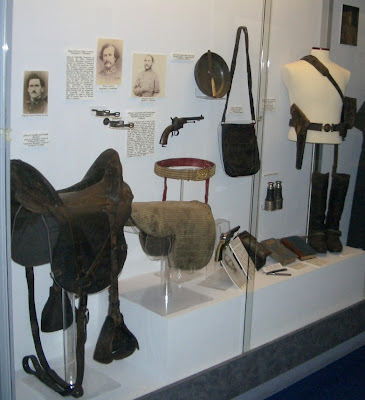



 Presentation Sword of General U. S. Grant – picture credit TCWM
Presentation Sword of General U. S. Grant – picture credit TCWM
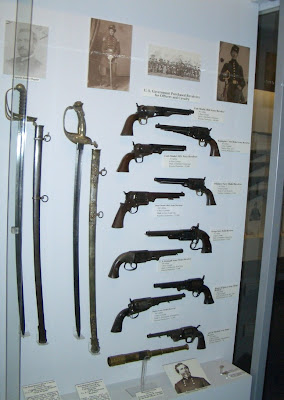
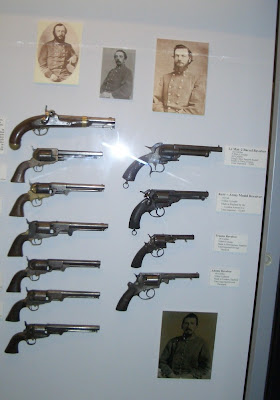
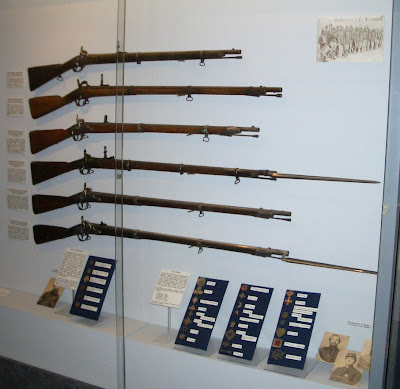



The .44 caliber Henry repeating rifle, created in 1860 the year before the Civil War, used the first complete self-contained metallic cartridge. The Henry rifle held 15 shots, which the average soldier could shoot in 10-12 seconds. Compare that to the 15-30 seconds it took the average soldier to reload his single shot muzzle loader rifle and you see why the Henry was a devastating weapon when it was used in battles. It was described by one Confederate as "that tarnation Yankee rifle they load on Sunday and shoot all week." The Union army had an estimated 6000 Henry Rifles, most of which were personally bought by soldiers. The Henry rifles could not be used in larger quantities because the Army could not produce metal cartridges at the rate they would have been consumed or transport the extra weight of all the ammunition the soldiers would have used. The Henry rifle was the direct ancestor of the Winchester rifles that would be used after the Civil War, particularly in the American Indian Wars.


As a countermeasure to the Union's blockades, the Confederate States developed the first naval mines. The mine above was called a "Confederate Torpedo" but it was actually what is now called a contact mine. When a ship contacted a mine it would explode and sink the hapless ship. The mines were promising and sank at least forty Union ships. The success with the naval mines led to the development of torpedoes and land mines as well as other similar explosive devices. A wide variety of fixed, moored, and drifting mines were deployed and used with effect at locations along the Atlantic coast, the Gulf coast, and along rivers, including those in the Mississippi basin. These cost effective weapons caused delays in Union operations, resulted in involved countermine operations, and caused fear and apprehension in crews.
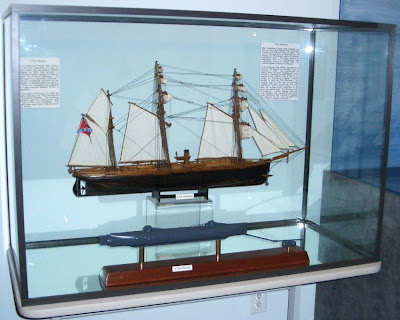
The CSS Hunley was the first submarine (bottom of photo above) to attack a warship successfully. In 1864, the Hunley rammed the Union's corvette Housatonic (top ship in photo above) in Charleston Harbor, successfully setting a torpedo into the ship's hull. This was the method used to deploy torpedoes until the self-propelled torpedo was developed a few years later. The torpedo is shown in the photo underneath the Hunley to the right. The Housatonic sank. Something went wrong on the Hunley, and it also sank shortly after the Housatonic, taking its crew of nine to a watery grave.

At least 618,000 Americans died in the Civil War, more than the nation has lost in all its other wars, from the Revolution through the current date. The Union armies had from 2,500,000 to 2,750,000 men. The Confederate strength, known less accurately because of missing records, was from 750,000 to 1,250,000 men. It is estimated that 94,000 Confederate soldiers died in battle and 164,000 died of disease. Approximately 110,070 Union soldiers died in battle and 250,152 died of disease.

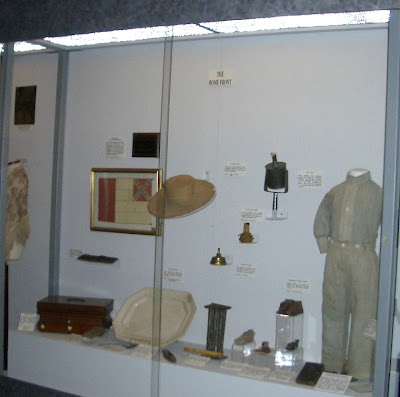
The following photos of clothing are from the Judy Richey Victorian Dress Collection. This private collection is an expansive look at original women's and children's clothing from the Victorian Era. With over 200 Victorian dresses and accessories, the museum exhibits up to 50 at a time on a rotating basis.


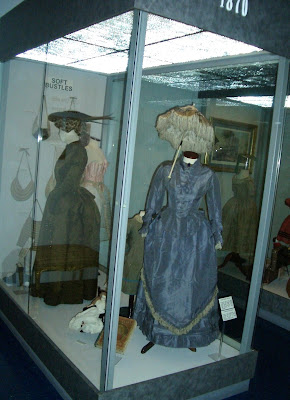



Since Texas did not suffer lengthy occupation during the war, reconstruction was not as harsh as in other states. Many people from the east hung a shingle from their home with the letters GTT (Gone to Texas) painted on it and started a new life here.


